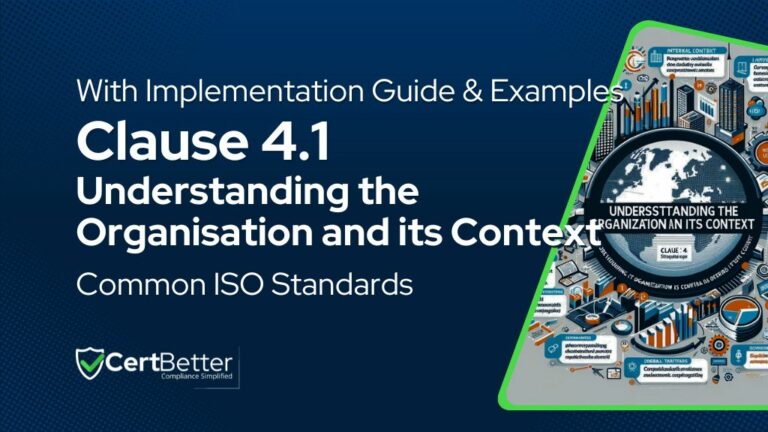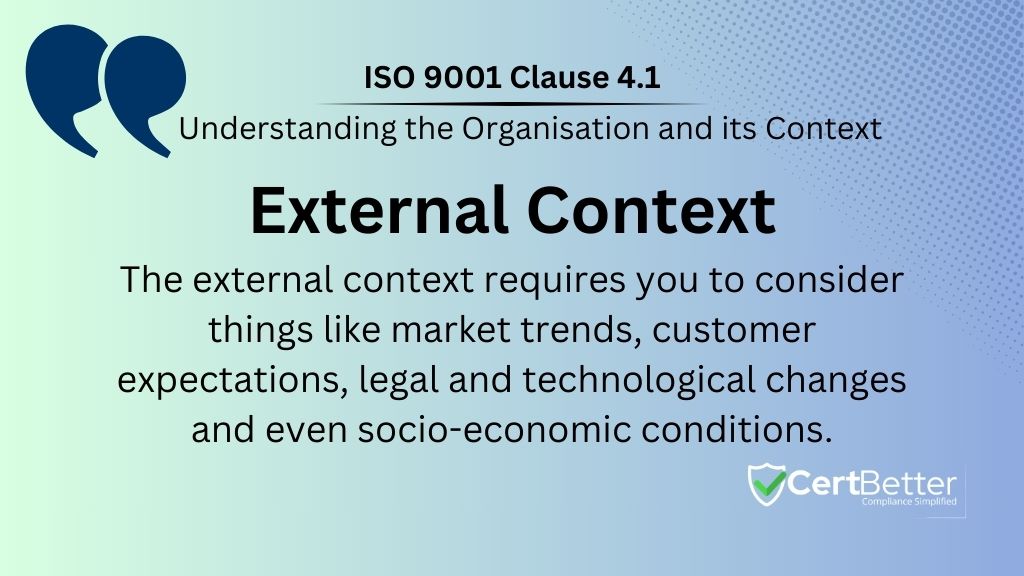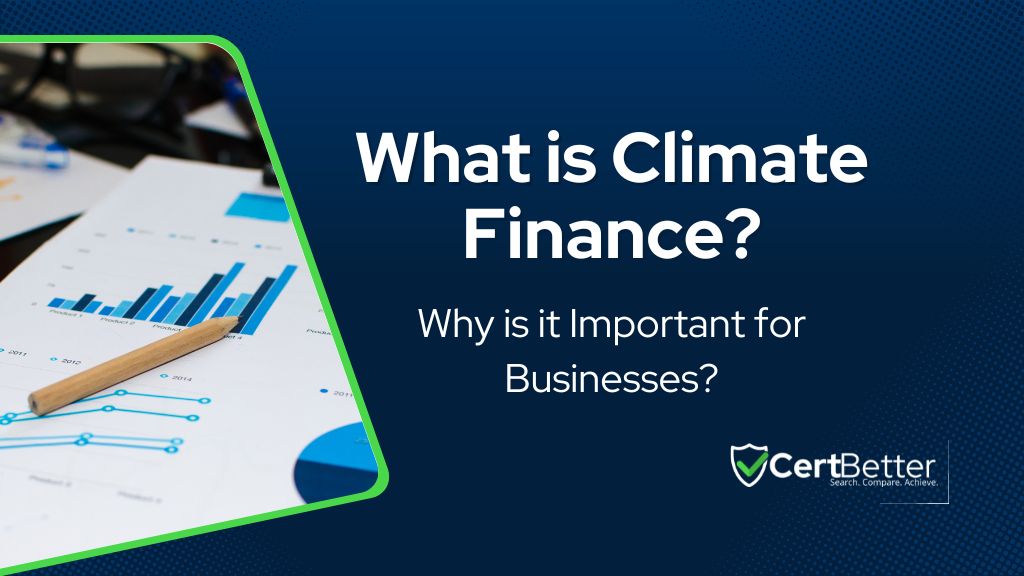Practical Examples of Clause 4.1 Understanding Organisation and its Context

Welcome to your CertBetter journey into understanding ISO Clause 4.1 Understanding the Organisation and its Context with examples. This clause is a crucial part of clause 4 of ISO standards such as 9001 and 27001, acting as a cornerstone for implementing effective management systems. By the end of this read, you’ll have a great understanding of why Clause 4.1 is important for your organisation and how to implement it effectively with examples.
Quick FAQs before we go deep
Is Clause 4.1 part of the Certification Audit?
Yes, Clause 4.1 is indeed an integral part of the certification audit for ISO standards. During the audit, the auditor will evaluate how well your organisation understands and manages its internal and external context as per Clause 4.1.
Can You Skip Clause 4.1 While Implementing an ISO Standard?
No, skipping Clause 4.1 is not advisable. This clause is fundamental to all ISO management standards, as it sets the groundwork for understanding your organisation’s internal and external context.
Is Clause 4.1 Applicable for All Types of Organisations?
Yes, Clause 4.1 is applicable and beneficial for all types of organisations, regardless of size, sector, or industry, as it helps tailor the management system to the organisation’s specific context.
Hopefully that clears up any confusion around clause 4.1, so let’s dive deep into understanding why ISO standards don’t want you to skip this clause.
Importance of Clause 4.1 Understanding the Organisations and its Context
Clause 4.1 is part of Major Clause 4 Context of Organisation and is a key requirement in many ISO standards certification, such as ISO 9001 Quality Management and ISO 27001 Information Security Management.
Think of it as a blueprint for recognising the factors that could impact your business, whether they’re emerging market trends, regulatory changes, or internal resources and capabilities.
It’s all about understanding your organisation in relation to its external and internal environment.
Grasping the essence of Clause 4.1 “Understanding the Organisation and its Context” helps you align your organisation’s strategies with its operational environment.
Understanding clause 4.1 involves a thorough analysis of your organisation’s internal context (like organisational culture, resources, and operations) and its external context (such as market trends, regulatory requirements, and socio-economic factors).
This clause is important part of your ISO certification because it requires your organisation to systematically identify and understand factors both inside and outside your organisation that can impact its purpose and strategic direction.
What is required by Clause 4.1 of the ISO Standards?
At its core, clause 4.1 of ISO standards is about two main areas: the external and internal context of your organisation.
External Context

The external context requires you to consider aspects and risks like market trends, customer expectations, legal and technological changes and even socio-economic conditions.
In the latest updates to ISO 9001 standard, 4.1 clause will require you to consider Climate Change in QMS part of external context.
Essentially, it’s everything outside your organisation that could have a bearing on your strategic decisions and operational processes.
Internal Context

The internal context refers to what happens within the walls of your business. This includes your organisational culture, values, performance capabilities, and internal processes.
Understanding this internal landscape is critical for aligning your strategies and operations with your overall goals and objectives.
How to Implement Clause 4.1 Understanding the Organisation and its Context
Once you understand what’s required by clause 4.1, it seems pretty obvious to recognise the internal and external factors that can impact your business.
In Australia, Understanding the Organisation and its Context could range from the ever-changing market demands to environmental concerns, like our unique biodiversity and climate challenges. Let’s put it into steps:
Step 1: Conduct Analysis
To begin with, you want to conduct a thorough analysis of these factors. Start internally — look at your workforce, organisational culture, and processes.
Understand what makes your team tick and what challenges they face. Then, expand your view outside the office walls.
Consider the legal and regulatory environment, especially in Australia where we have specific laws and standards governing various industries. Also, think about economic, technological, and competitive factors.
Step 2: Engage everyone
Next up, get everyone on board. Engaging with your team is crucial. As Aussies, we value a good yarn and teamwork.
Hold workshops or team meetings (whatever works best for you!) where you can discuss and identify these factors collectively. This not only improves understanding but also promotes a culture of involvement and responsibility.
Step 3: Document to recognise
Documenting your findings is key. Whether it’s a formal report or a series of notes, make sure it’s clear and accessible. Remember, you’re not just ticking a box for compliance — this documentation should be a living document, something you refer to and update regularly.
Step 4: Align with your operations
Now, let’s talk about how this fits into your overall management system. Understanding your organisation’s context isn’t a one-off task – it’s an ongoing process that should inform your strategic decision-making. It’s about being agile and responsive to changes, whether they’re local market trends or global economic shifts.
Step 5: Review Review Review
Lastly, never underestimate the power of regular reviews. I often see businesses just documenting their context but hardly reviewing it!
In the dynamic Aussie business environment, what’s relevant today might not be relevant tomorrow. Schedule regular check-ins to reassess your organisation’s context and adjust your strategy accordingly.
By understanding your internal and external environment, you can make informed decisions, adapt to changes, and stay ahead in the game. Good luck, and if you need more guidance, I’m always here to lend a hand!
Examples of Clause 4.1 Internal and External Context
Creating a comprehensive list of internal and external contexts for all industries is quite extensive but I’ll try to provide a general overview that should cover most sectors.
Remember: Each industry will have unique factors, so it’s important to tailor this list to your specific industry context.
Internal Context for All Industries:
Organisational Structure: The hierarchy, departmental setup, and reporting lines.
Corporate Culture: Shared values, beliefs, and norms within the organization.
Policies and Procedures: Internal rules and methods of operation.
Resources: Availability of financial, human, and technological resources.
Capabilities and Competencies: Skills, knowledge, and expertise of employees.
Performance Data: Past and current performance metrics.
Stakeholder Relationships: Interaction with internal stakeholders like employees, management, and shareholders.
Risk Management Strategies: Internal approaches to identifying and managing risks.
Product or Service Portfolio: Range and types of products or services offered.
External Context for All Industries:
Market Trends: Changes and developments in the industry market.
Economic Factors: Economic trends, such as inflation, interest rates, and economic growth.
Legal and Regulatory Framework: Laws and regulations that affect the industry, including Australian-specific requirements.
Technology Trends: Advances in technology relevant to the industry.
Competitive Landscape: Competitor strategies and market positioning.
Environmental Factors: Environmental considerations and sustainability issues.
Social and Cultural Trends: Societal values and cultural aspects influencing the industry.
Global Dynamics: International trade, global market trends, and cross-border regulations.
Supplier and Partner Networks: Relationships with external suppliers and business partners.
It’s important to remember that these factors can vary significantly between industries. For example, in the technology sector, rapid innovation and technological advancements might be the most critical external factors, while in manufacturing, supply chain stability and production processes might be more pivotal.
It’s crucial to undertake a thorough, industry-specific analysis to grasp the nuances of Clause 4.1, ‘Understanding the Organisation and its Context’. This deep dive will ensure you comprehensively understand how this clause applies to the unique operations and challenges of your specific industry.
- Last updated: May 22, 2024
- CertBetter
Our community of compliance professionals and ISO experts is ready to provide you with insightful answers and practical solutions. Join the discussion now!
- Recommended Reads
- 33 reads
-
Frequently Asked Questions
Understanding ISO Terminology: Guide to Important Terms and Concepts
No posts found
ResetConnect with ISO Certification Consultants
CertBetter makes it easy to find ISO certification consultants and compliance professionals from around the globe.

